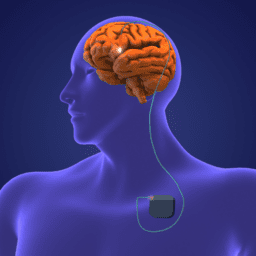Although many symptoms can occur in Parkinson’s, the most common motor symptoms are tremor, stiffness, and slowness. In this webinar, Dr. Aaron Haug, Neurologist and Movement Disorders Specialist with Blue Sky Neurology in Englewood, CO, discusses treatment strategies and explains in detail the specific medications used to treat the motor symptoms of Parkinson’s.
Optimal medication treatment depends on symptom severity, possible side effects, and other factors such as age, so it is beneficial to work with a neurologist experienced in treating Parkinson’s.
–Dr. Aaron Haug, MD
You can access the video here.
To download the slides, click here.
To access the audio recording, click here.
To read the transcript, click here.
To watch the Q&A follow-up to the webinar, click here.
Click here to download the transcript for the Q&A follow-up interview.
SHOW NOTES
- Not everyone will experience the same symptoms, so be sure to discuss your specific situation with your medical provider.
- While it is true that many Parkinson’s medications work best in the early years (fewer fluctuations and less likelihood of side effects such as dyskinesias), this has more to do with how many years a person has had Parkinson’s, rather than how many years they have been on medications.
- Medication preferences vary among prescribers as well as among people with Parkinson’s.
- Over the years, fluctuating response to medication can occur as the underlying disease progresses. It is common to take medications from several categories to smooth out fluctuations.
- Despite efforts to reduce fluctuations, OFF periods may still occur. Several medications can be helpful in the treatment of OFF periods: extra carbidopa/levodopa (partial tablet or whole tablet); improving speed of onset by crushing or chewing tablets or taking with a full glass of water or an acidic or carbonated beverage.
- Boosters (such as MAO-B Inhibitors, COMT Inhibitors, and Adenosine-A2A Receptor Antagonists) can help treat fluctuations.
- Surgical therapies, including Deep Brain Stimulation (DBS) or Duopa pump are often considered when motor fluctuations or dyskinesias cannot be optimized with medication alone.
CATEGORIES OF MEDICATIONS FOR PARKINSON’S MOTOR SYMPTOMS
- Levodopa
- Dopamine agonists
- MAO-B Inhibitors
- COMT Inhibitors
- Amantadine
- Anticholinergics
- Adenosine-A2A Receptor Antagonists
CARBIDOPA/LEVODOPA
- The gold standard for Parkinson’s
- Levodopa (L-dopa) is converted to dopamine in the brain
- Carbidopa is a transporter
- Levodopa is the most effective medicine in improving tremor, slowness, and stiffness
- Possible common side effects are nausea and light-headedness (and these are possible with most Parkinson’s medications)
DOPAMINE AGONISTS
- Like levodopa, dopamine agonists (DAs) provide benefit for tremor, stiffness, and slowness
- Generally considered the second-most effective category of medications, behind levodopa
- DAs have certain advantages and disadvantages
- Advantages: over the course of several years, less likely than levodopa to cause dyskinesias; possible benefit for depression
- Disadvantages: occasional other unpredictable side effects-sudden sleepiness, leg swelling; more likely to cause impulse control disorders
- Due to lower risk of dyskinesias over several years, often used as part of a “levodopa-sparing strategy”
MAO-B INHIBITORS
- Monoamine oxidase (MAO) is an enzyme involved in normal dopamine recycling in the brain
- Inhibiting the MAO enzyme leads to an increase in dopamine
- Mild benefit, but well tolerated
- Often used alone in early Parkinson’s
- Often used in combination with other medications for later stages
COMT INHIBITORS
- Catechol-O-methyl transferase (COMT) is another enzyme, this one involved in the breakdown of levodopa
- COMT inhibitors are only used in combination with carbidopa/levodopa, as no effect on their own
ADENOSINE-A2A RECEPTOR ANTAGONISTS
- This type of medication blocks adenosine, which likely increases dopamine signaling
- Because caffeine also blocks adenosine, some studies have shown that coffee consumption decreases risk of Parkinson’s
AMANTADINE
- Unique among Parkinson’s medications
- Provides benefit for motor symptoms of tremor, stiffness, and slowness as other medicines do
- Only medication that is used to treat dyskinesias
- Exact mechanism not understood
- Side effects may limit use over age 65
- Dry eyes, dry mouth, constipation, hallucinations
ANTICHOLINERGICS
- Helps with tremor; does not help stiffness and slowness
- Side effects may limit use over age 65
- “Anticholinergic side effects” is the term used to describe some of the possible side effects including dry eyes, dry mouth, constipation, hallucinations
WANT MORE PARKINSON’S MEDICATION RESOURCES?
When Is the Best Time to Start Parkinson’s Medications?
How to Reduce the Cost of your Parkinson’s Medications

















